Comparing Ductless AC Systems with Traditional HVAC Systems
Initial costs vary based on system complexity and building configuration. Professional assessment determines optimal system selection for specific applications.
Professional HVAC installation requirements differ significantly between ductless and traditional systems. Ductless installations involve mounting indoor units and running refrigerant lines, while traditional systems demand extensive ductwork installation. Initial costs vary based on system complexity and building configuration. Professional assessment determines optimal system selection for specific applications.
Energy Efficiency Comparison
Ductless systems typically achieve higher energy efficiency ratings than conventional HVAC units. Direct air delivery eliminates duct-related losses, which can exceed 30% in traditional systems. Variable-speed technology enables precise output matching, reducing energy consumption. Professional maintenance keeps both system types operating at peak efficiency levels.
Space Requirements Analysis
Traditional HVAC systems require substantial space for ductwork, air handlers, and equipment. Ductless solutions occupy minimal space with compact indoor units and outdoor components. Eliminating ductwork preserves valuable building space while simplifying installation. The professional design optimizes component placement for both system types.
Temperature Control Capabilities
Modern ductless systems provide independent zone control with individual temperature settings. Traditional systems often rely on single thermostats controlling large areas. Advanced ductless controls enable precise comfort management in multiple zones. Professional configuration maximizes control capabilities for both approaches.
Air Quality Management
Ductless systems eliminate air quality issues associated with duct contamination, while traditional systems require regular duct cleaning to maintain air quality. When properly maintained, advanced filtration technology benefits both system types. Professional service supports optimal air quality performance.
Maintenance Requirements Comparison
Traditional HVAC systems demand comprehensive maintenance, including duct cleaning and sealing. Ductless maintenance focuses on indoor units and outdoor components without duct-related tasks. Both systems require regular professional service to maintain performance. Preventive maintenance programs extend equipment life regardless of system type.
Operating Cost Analysis
Ductless systems typically offer lower operating costs through superior efficiency. Traditional systems incur additional expenses for duct maintenance and higher energy consumption. Long-term cost comparisons favor ductless technology in most applications. Professional maintenance maximizes cost benefits for both options.
Installation Flexibility Assessment
Ductless systems offer superior installation flexibility without ductwork constraints. Traditional systems require adequate space for duct installation and equipment. Retrofit applications often favor ductless solutions due to minimal structural impact. Professional installers evaluate site conditions for optimal system selection.
Noise Level Comparison
Modern ductless systems operate at lower noise levels than traditional HVAC equipment. Advanced components and installation techniques minimize sound transmission. Both system types benefit from professional installation practices that reduce operational noise. Sound attenuation measures enhance comfort for all installations.
Climate Response Capabilities
Ductless heat pump systems provide efficient heating and cooling in various climates, while traditional systems may require separate heating and cooling equipment. Advanced ductless technology maintains effectiveness in extreme temperatures. Professional sizing calculations optimize performance for both approaches.
Control System Integration
Both system types offer smart control integration capabilities. Ductless solutions typically provide more granular zone management options. Building automation compatibility exists for both traditional and ductless installations. Professional programming maximizes control system benefits.
Aesthetic Impact Considerations
Ductless indoor units remain visible in conditioned spaces. Traditional systems conceal equipment but require visible registers and returns. Modern ductless designs offer improved aesthetic options. Professional installation minimizes visual impact for both system types.
Long-Term Value Analysis
Quality ductless and traditional systems provide reliable service when properly maintained. Initial costs typically favor traditional systems, while operating costs favor ductless technology. Professional installation and maintenance protect equipment investment regardless of system choice. Return on investment varies based on specific applications.
Environmental Impact Evaluation
Both system types support environmental goals through efficient operation. Ductless systems typically achieve higher efficiency ratings and reduced energy consumption. Professional maintenance maintains environmental performance for all installations. Proper refrigerant management benefits both approaches.
Both ductless and traditional HVAC systems offer distinct advantages for specific applications. Evaluating building requirements, usage patterns, and cost factors guides optimal system selection. Qualified HVAC professionals deliver maximum value through proper design, installation, and maintenance of either system type.

